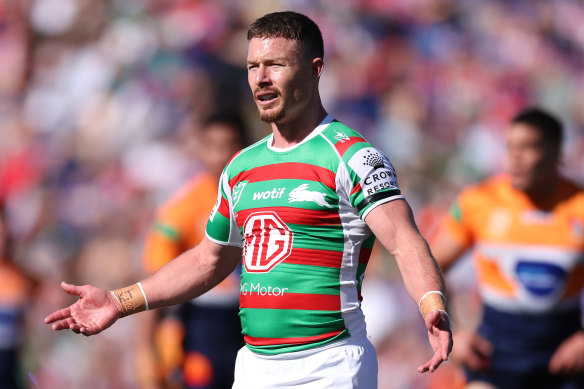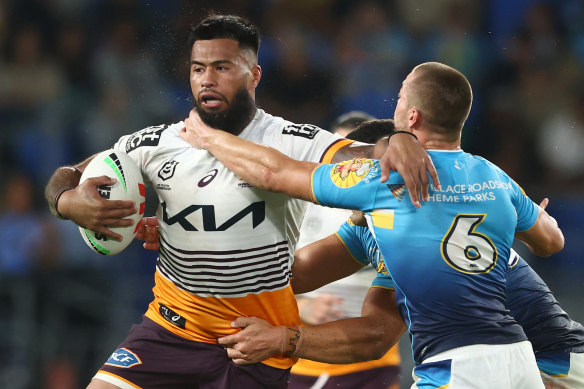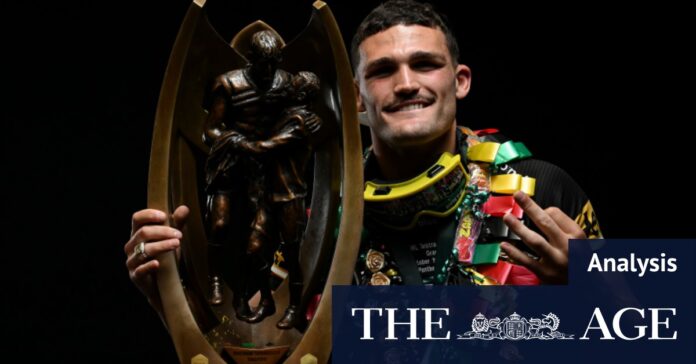[ad_1]
The salary cap still isn’t working
The salary cap is not the equalising mechanism the NRL boasts. The Panthers and Broncos combined have more players in the top 50 than the total of the nine below-average clubs. Penrith have shed five premiership players and are favourites for a fourth consecutive premiership. Their development system is more influential in the NRL than a salary cap. With the AFL pledging to invest $1 billion over 10 years, aiming to produce 1 million players – much of this spent in NSW and Queensland – the ARLC needs to allocate more to the base of the playing pyramid.
Pathways to success
Penrith and Brisbane have the best pathways systems. If you add the players these clubs have produced who are now with other clubs, their contribution is nearly half the top 50. If you include Melbourne, it’s 60 per cent. In other words, the remaining 14 clubs supply only 20 players either currently on their roster, or products of their systems. While Brisbane and Penrith have the best development pathways in the NRL, they are radically different systems. The Panthers invest in junior representative teams in the NSWRL competitions, recruiting from a zone which now extends to the state’s central west, while the Broncos identify talent, award scholarships and invest in coaching. The Storm have adopted the Penrith model and will compete in the Harold Matthews, Jersey Flegg and SG Ball NSWRL competitions in 2023.
Where is the next generation?
An ageing tail further reflects lack of investment in development. To be fair, COVID-19 delayed the progress of talented youth but ideally, a code would want players ranked 41 to 50 to be at the start of their NRL careers. However, half this group are at the other end of the age spectrum. It’s understandable, however, given the judges have seen more of them than the youngsters.

Damien Cook, at 32, finds himself in the sphere where the NRL would expect to see some rising stars.Credit: Getty
Spine strikes a chord with judges
Half the list are spine players: halfback, five-eighth, hooker or fullback. Insofar as spine players comprise only four of the 13 positions on the field, the playmakers are heavily represented. Their numbers are even greater considering players like Joey Manu (17) and Jack Wighton (44) will play in the centres at their clubs, the Roosters and Rabbitohs respectively, although capable of roles in the spine.
No cutting out the middlemen
The middle is still strong. It could be expected that with the piano players dominating, the piano lifters would be ignored. However, 13 players of the 50 are “middles”, also called “ruckies”, the men who do the grunt work, carrying the ball forward, establishing momentum for the decision makers to exploit. Their representation in the 50, as a percentage, approximates their numbers on the field where three starting players are “middles”, with another two on the bench. The judges have recognised their 115-year-old role, marking down the edge forwards and wingers.

Enforcers like Payne Haas shows the role of the traditional front-rower is still valued.Credit: Getty
A rare Origin win for NSW
The Blues still have the numbers. A breakdown of player eligibility is NSW 25, Queensland 17 and New Zealand 8. The Blues have traditionally had greater numbers from which to select State of Origin teams, compared to the Maroons. Historically, it’s twice as many but when the top 50 players are considered, the Blues’ numerical superiority is not as pronounced. This is no surprise considering Queensland has won three of the past four Origin series.
Polynesian, Indigenous players star
Players of Indigenous and Polynesian heritage hold their own. Approximately half the NRL playing pool is of Indigenous and Polynesian descent and this equates to their representation in the top 50. In other words, they are half the playing pool and half the top talent. More importantly, if the same exercise was done with Polynesian players when the NRL began in 1998, the result would be closer to 10 per cent. When John Fifita was included in the Dragons’ top 50 in the mid-1980s, he was the last player graded but possibly the first Polynesian. Since then, these sons of the South Pacific have strengthened all NRL clubs. Indigenous players have always been chosen in state and national teams in disproportionate numbers to both their total number in the competition and their percentage in the Australian population.
Loading
The unlucky ones
We can’t agree on everything. There will always be anomalies. Many NRL fans would be shocked at the lofty position of Shaun Johnson (10) but remember he was beaten for the Dally M Medal by only one vote by Kalyn Ponga (ranked 2). Others will be surprised the Cowboys’ Jason Taumalolo did not make the top 50. Nor did Tohu Harris who was great for the Warriors in 2023. While at the Storm, Harris played middle, edge, in the halves and centres. Plus he played 80 minutes. We don’t credit versatility in the NRL like we should, particularly since all recent rule changes have rewarded it.
[ad_2]
Source link


